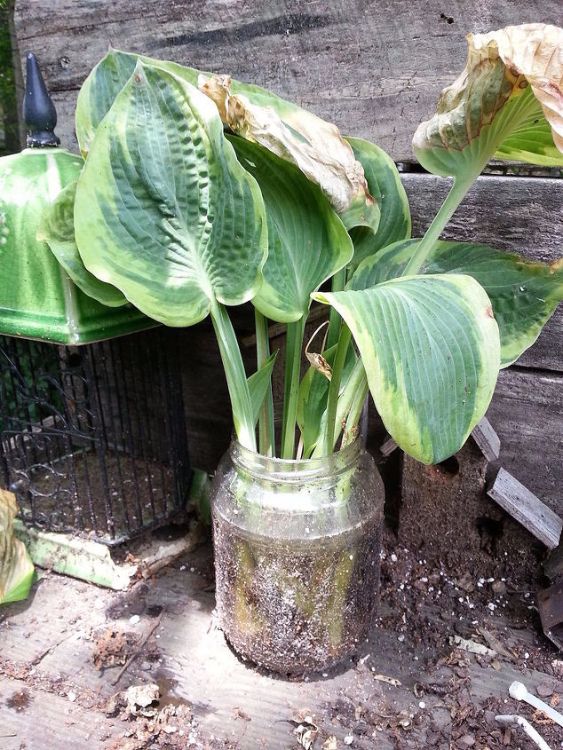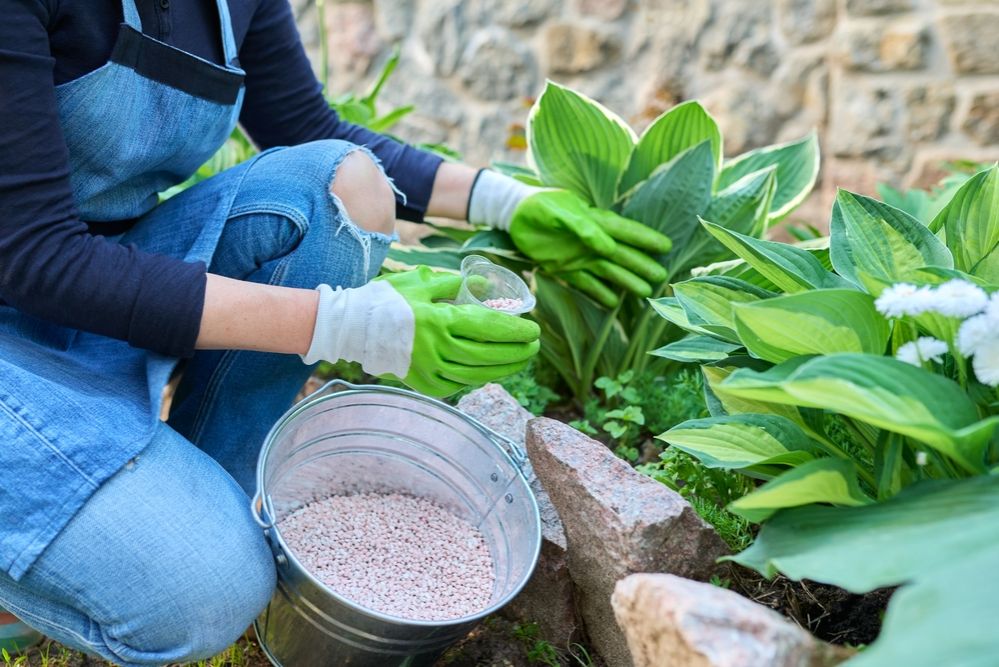Hostas are a lovely plant for most gardens. They're pretty low maintenance, and this large, full plant is a lush complement. There are more than 2,500 varieties of hosta, so gardeners have several options.
It's hard to believe that a bare root hosta can grow to be six feet wide. Whether you are a newbie or seasonsed hosta gardener, here are 9+ pro tips for working hostas into your landscape or garden:
Advertisement
1. Shade matters
Hostas are notorious for being shade tolerant, but some varieties need a little more light. Try looking at the leaves. Darker leaves need moderate shade and lighter leaves fair well in brighter sun, but make sure all receive at least some shade.

Shutterstock
2. Leave the dead foliage alone
When the plants die in the winter, leave the dead foliage alone. Add some leaves on top to provide a little insulation. The foliage will let you see where the plants are and prevent accidental trampling of the new growth in the spring.

Shutterstock
3. Protect the shoots
Keep deer away from your hosta sprouts by planting daffodils around the shoots. Protect the plant from slugs by dusting the ground around the shoots with sand.

Shutterstock
4. Use a belt to move the plant
If you need to relocate your hosta plant, pull the leaves together and secure a belt around the stems to keep them from breaking while you transplant. .

Shutterstock
5. Revive your plant
If your hosta takes a turn for the worse, you may be able to save it. Pull the damaged plant from the ground, salvage what you can and plant it in a jar of water until the roots are ready to be replanted.

C Renee
6. Divide the plants to make them fuller
This is a case of what doesn't kill you makes you stronger. Dividing hostas can give you more plants. It takes a few weeks to get them established if you tackle them in the summer, but it gives you time to fully prepare them to get settled for the winter and next spring.

Shutterstock
7. Clean around the plant
When the fall weather settles in, it's time to clean up the flower bed to prevent rot and other pests. Some gardeners prefer removing the foliage, while others (see tip No. 2 — just let it be). Either way, now is a good time to remove anything around the plant that could cause rotting or disease.

Shutterstock
8. Use mulch
If you live in a hot, dry climate and/or have sandier soil, add mulch around your plants to ensure they don't dry out too quickly.

Shutterstock
9. Be patient
It takes an average of three years for a hosta to become established. If you want a bigger plant faster, don't buy a starter plant from a nursery. Ask a friend to give you a division from their plant instead.

Shutterstock
Advertisement
Beginning gardeners will love that this plant is sturdy and can provide plenty of leaves and coverage. Try a few of these ideas to ensure you get the best plant possible.

